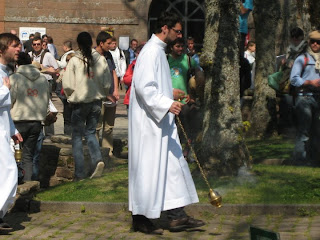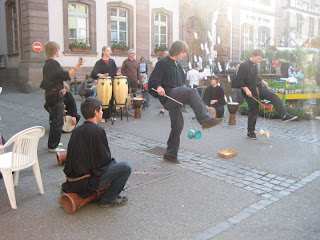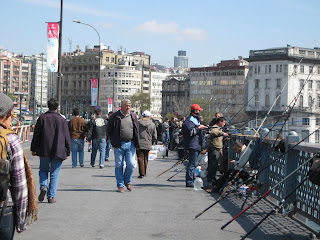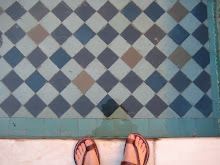Alsacian Wine Route
The region of France where I live is known as Alsace, but it is an area disputed between France and Germany for centuries. However, while its nationality hasn't always set in stone, what has been clearly understood throughout its history is its reputation for great wine. Miles upon miles of vineyards cover the region and a wine route connects the small towns that dot along the trek. Nowadays, driving along the wine route is seen as a must-do attraction when visiting Alsace. Hence, some of my friends and I decided to rent cars and see what all the fuss was about...
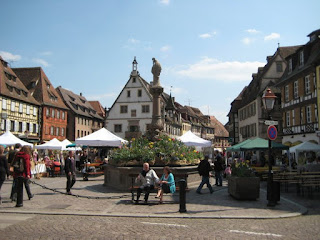 |
| Our first stop, the small town of Obernai. |
 |
| Next we drove up to a beautiful monastery with an incredible view from atop a mountain. |
 |
| It happened to be Palm Sunday and we stumbled upon a Catholic procession. |
 |
| The amazing view! |
 |
| Rows and rows and rows and rows of grape vines line the hillsides as we see here by the town of Barr. |
 |
| The busiest city we visited, Ribeauville. There were many tourists traveling along the wine route stopping by for the festivities. |
 |
| Look up! You can see the Haut-Koenigsbourg Castle looming above the city. |
